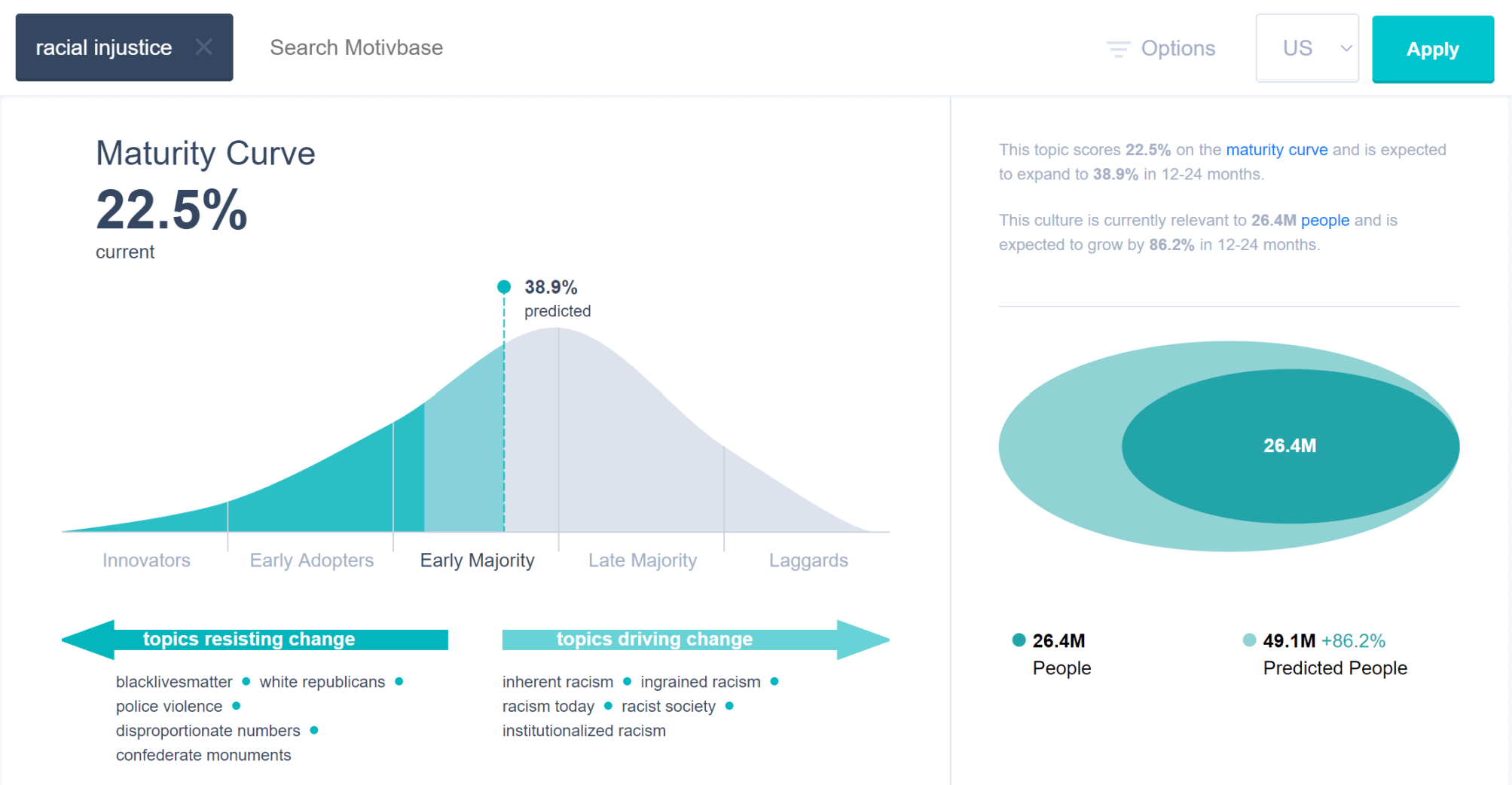Simply put, Trends helps organizations make sense of cultural shifts and changes so they can make informed decisions about the future of products, brands, and their company. But of course, there’s more to the notion of cultural change because it isn’t a thing in and of itself. Instead, it is made up of (broadly speaking) three component parts. We consider each part as a track that undergoes constant change and evolution.
- The first track relates to larger societal and socio-political changes. E.g. The reinvigorated movement for black lives and the renewed fight for civil rights in the United States.
- The second track/type of change relates to the birth and development of trends that impact people’s beliefs, and consequently, their behaviors. E.g. An increased focus on sustainability and waste reduction at the household level.
- The third track pertains to a change in meanings around a category of product/solution. E.g. Evolving definition of what is considered “natural” in the context of a category or business.

Each of these tracks of change impacts all of us, as consumers, and of course, as research and innovation professionals trying to make the right bets at the right time.
MotivBase Trends helps you study the implicit meanings behind each of these tracks of change and quantify and predict its impact on your business in two simple ways.
The first way involves studying each track of change individually, devoid of any industry or category lens. This method allows us to get a pure understanding of what that change means to people and why it matters. It’s the ultimate way to gain empathy for the consumer’s underlying purpose and motive. A simple example of this is to study what “racial injustice” means to people today.

The second way is to study each track of change in the context of the other. That is, to study the impact of a trend like sustainability on the changing meanings and expectations around cleaning products and packaging. Or to examine the impact of the fight for civil rights and black lives on the meanings associated with certain types of skincare products like moisturizers that claim to “whiten” skin.
If we were to assume that there is just one change happening in each track each year (which is not the case in reality), we’d end up with needing to conduct at least six types of ethnographic analyses over the course of the year.
Here’s an example of what those six projects could/should look like (assuming you’re a skincare company):
In reality, the pace of change in culture is so immense that each track is undergoing at least two to three major shifts and developments each year. So it’s not hard to see why most of our clients conduct more than 30 agile ethnography projects with our PhD Anthropologists each year.
The reality is that culture and trends are evolving at an incredible pace, and it is increasingly becoming critical to do more than just pay lip-service to these types of questions. In the midst of all this C-Suite is also becoming more demanding, especially in the COVID-19 era, pushing you to create a more agile and proactive stream of innovation. Which is exactly why we built MotivBase Trends.
Through MotivBase Trends, we bring an agile framework of research to your fingertips, enabling these types of intricate ethnographic analyses on a regular basis. This creates a culture of exploration and ensures that topics and ideas aren’t just examined when they become an “issue” but rather are understood from the get-go so as to create a clear pipeline of projects that is proactive and agile.
That is why hundreds of companies trust TRENDS to drive their innovation pipelines.


